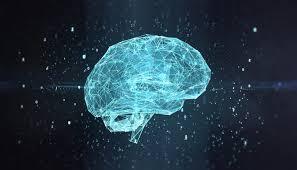Neural networks represent a cornerstone in the realm of artificial intelligence (AI), emulating the human brain’s capability to learn and make decisions. This article explores the fundamentals, architecture, applications, and future directions of neural networks, shedding light on their transformative impact across various industries.
Fundamentals of Neural Networks
Neural networks are computational models inspired by biological neural networks in the human brain. They consist of interconnected nodes (neurons) organized into layers:
- Input Layer: Receives raw data or features from the external environment.
- Hidden Layers: Intermediate layers that perform computations through weighted connections between neurons.
- Output Layer: Produces the final output based on the computations performed in the hidden layers.
Architecture and Types of Neural Networks
- Feedforward Neural Networks (FNN): The simplest form where information flows in one direction, from input to output layer, used in tasks like image and speech recognition.
- Recurrent Neural Networks (RNN): Designed to handle sequential data by incorporating feedback loops, making them suitable for tasks like natural language processing and time series prediction.
- Convolutional Neural Networks (CNN): Specialized for processing grid-like data, such as images, using filters to detect spatial hierarchies of features.
- Generative Adversarial Networks (GAN): Consist of two neural networks (generator and discriminator) competing against each other, used for generating new content like images and text.
Applications Across Industries
Neural networks have revolutionized various industries, including:
- Healthcare: Diagnosing diseases from medical images (CNNs), predicting patient outcomes (RNNs), and drug discovery (GANs).
- Finance: Forecasting stock prices (RNNs), fraud detection (FNNs), and algorithmic trading (Reinforcement Learning).
- Automotive: Autonomous driving (CNNs for object detection), predictive maintenance (RNNs for equipment health monitoring).
- Entertainment: Recommender systems (FNNs), video content analysis (CNNs), and music generation (RNNs).
Challenges in Neural Networks
- Overfitting: Occurs when a model learns too much from noise in the training data, leading to poor performance on unseen data.
- Training Data Requirements: Neural networks require large amounts of labeled data for effective training, which may be expensive or difficult to obtain.
- Interpretability: Understanding why neural networks make certain decisions remains a challenge, particularly in critical applications like healthcare and law.
- Computational Resources: Deep neural networks demand substantial computational power, limiting their deployment on resource-constrained devices.
Future Directions and Innovations
- Explainable AI: Enhancing interpretability of neural networks through techniques like attention mechanisms and model introspection.
- Transfer Learning: Leveraging pre-trained models to improve performance on new tasks with limited data.
- Ethical Considerations: Addressing biases in data and ensuring fairness in AI-driven decisions.
- Neuromorphic Computing: Designing hardware architectures inspired by neural networks to achieve more efficient and brain-like computation.
Conclusion
Neural networks continue to push the boundaries of AI, driving innovation across industries and enabling solutions to complex problems previously considered insurmountable. As advancements in architecture, training techniques, and applications unfold, the future holds promise for neural networks to further integrate into daily life, enhancing productivity, efficiency, and the quality of decision-making processes worldwide. Understanding and harnessing the potential of neural networks is pivotal in shaping the next generation of AI-driven technologies and their impact on society.


+ There are no comments
Add yours